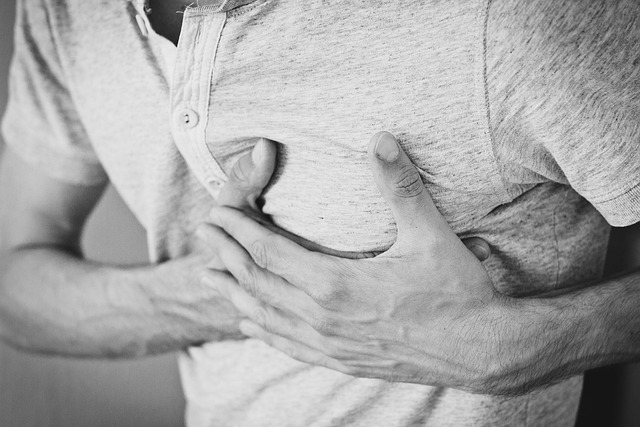 |
| Misbeliefs About the Human Body |
Misconceptions About the Human Body
The exciting thing about medical science is that discoveries happen every day, dispelling old beliefs and providing new insight into how the human body works. Often, these discoveries confirm folk wisdom in seemingly indirect and mysterious ways. Will we ever know all the myths and facts about the human body?
For example, your mama or other childhood caregivers probably advised you to bundle up, leading you to believe that cold weather makes you sick. However, during your adult years, people cried, “No, it’s the germs!” — technically, that’s true. However, a recent discovery also revealed that each 5° Celsius drop in temperature lowers your immune response by nearly half. So yes, it’s also valid that the cold plays a role!
It can be fun — and validating — when science confirms what mama said was true about staying healthy. However, believing other myths can make you sick or prolong existing illnesses. What might you be mistaken about? Here are eight common misconceptions about the human body — which ones do you still believe?
Why It’s Important to Address Misconceptions About the Body
Some myths do minor damage. For example, there’s no harm in stepping on a sidewalk crack — your loved one’s back will remain intact regardless of where your foot lands on the pavement.
However, other misconceptions about the human body become dangerous when taken as facts. For example, you might think it’s normal to see a bit of blood in the sink when you brush or floss. Yet this symptom can indicate a buildup of plaque that leads to gingivitis, a gum condition that may increase your risk of dementia.
8 Myths and Facts About the Human Body
Since myths can cause actual harm, you should stay as current in your knowledge as possible to protect your health. Are you ready to learn eight myths and facts about the human body that may surprise you? Here are the answers to some of your most frequently asked questions.
1. Do You Only Use 10% of Your Brain?
If your teacher taught you this in elementary school, please forgive them. Roughly 50% of educators pass on this erroneous tidbit, but it’s time to set the record straight. 90% of your brain isn’t some murky, unused idle space as mysterious as the dark side of the moon. In reality, you use all of this organ.
Different parts of your brain perform various functions, meaning they may not all “light up” simultaneously. However, PET and MRI technology let scientists take a closer look at the inside of your skull bucket all the time, and they can see that the entire brain is constantly active, even in sleep.
2. Can You Shock a Flat-Lined Patient Back to Life?
The EKG machine lets out a high, squidgy whine. Medics race in from other areas of the hospital, and one grabs a set of paddles, shocking the patient. Miraculously, they return to life — at least on your favorite television medical drama.
In reality, you can’t shock a totally flatlined heart back to life. Why? It’s like trying to jumpstart a car with no battery. While an AED machine is an invaluable tool in resuscitation, it only works while some electrical activity remains. A flatline means all activity has ceased.
 |
| Do men run a higher risk of heart attacks |
3. Do Men Run Higher Heart Attack Risks?
A man goes to the hospital complaining of an elephant-like feeling crushing his chest. A woman reports to the same ER with jaw pain and an uneasy, nauseous feeling. They’re both having a heart attack — which one has the better chance of survival?
Surprisingly, the answer is often the man for several reasons. Here’s one medical myth that can kill. It isn’t so much about who is more likely to experience this health event but rather about receiving lifesaving help. While it’s true that men experience roughly twice as many heart attacks as women, they’re also more likely to receive prompt, lifesaving treatment, substantially increasing their chances of survival.
That means women are more likely to die from lack of prompt treatment.
Women often experience heart attack symptoms differently, manifesting as:
- nausea,
- back pain,
- headaches,
- jaw pain,
- or general fatigue and malaise.
Additionally, the age-old myth of female hysteria remains alive and well among medical professionals.
4. Is a Drink or Two Harmless?
“I’m enjoying this Merlot for my heart.” Be honest; have you ever raised a toast like this?
While the National Institute of Alcohol Abuse and Alcoholism may define moderate drinking as no more than 14 drinks a week for men and seven for women, that doesn’t mean imbibing any amount of alcohol has no impact. This substance can do a number on your neurotransmitters, and that’s not all. It can cause lasting changes in your brain structure, making quitting harder once you get hooked.
5. Is Addiction a Choice?
Addiction is more than actively deciding to use a preferred substance too much. While the disease may start from one decision, many substances lead to physiological changes that make quitting difficult, even dangerous, when done incorrectly.
For example, alcohol deadens the receptors for several crucial neurotransmitters, including GABA and dopamine. As your body tries to return to homeostasis, levels of these substances fluctuate widely, affecting others. As a result, heavy drinkers who suddenly go cold turkey can experience delirium tremens, a flood of unpleasant physical and mental symptoms like hallucinations, insomnia, excess sweating, and stomach and chest pain.
These symptoms can result in death, which is why people looking to detox should seek medical attention. Proper treatment can save a life by keeping the patient safely in professional hands should their heart, or brain function go haywire, causing seizures and potentially death.
6. Do Detox Drinks Flush Toxins Out of Your Body?
Products line drug store shelves proclaiming, “Detox your liver in just 24 hours.” Do any of these elixirs work? The bottom line? Nope. Giving your body more of the good stuff, like various nutrients, and less of the bad will improve your health.
However, it’s not because you’re flushing out toxins. Your liver and kidneys work at this task all day, every day, regardless of what you consume. You can improve their function by nourishing them and not making them work harder than necessary.
Keep in mind that improving your well-being requires more than giving your internal organs the occasional shower. It takes a healthy lifestyle.
7. Does Cracking Your Knuckles Cause Arthritis?
Various forms of arthritis exist. Two of the most common are rheumatoid and osteoarthritis. The former stems from an autoimmune disorder, and the latter results from plain old wear and tear — but cracking your knuckles won’t hasten the process.
When you crack your knuckles, the popping sound comes from vapor pockets trapped in the fluid around the joint. You might experience a little temporary swelling, but it won’t cause your condition to get worse.
8. Do You Only Have Five Senses?
You probably learned the five senses in school: sight, touch, hearing, touch, and taste. However, did you ever ask, “Is that all there is?”
The answer is no. In addition to the standard five you learned as a kid, you also have these lesser-known ones:
- Equilibrioception: Your sense of balance.
- Proprioception: Your sense of where your body is in space.
- Kinesthesia: Your sense of movement.
- Thermoception: Your sense of hot and cold.
- Nociception: Your sense of pain.
- Chronoception: Your sense of time’s passage.
Misconceptions, Myths, and Facts About the Human Body
Exploring the various myths and facts about the human body is fun. The more science learns about what makes humans tick, the more questions they answer — while forming new ones.
However, learning the myths and facts about the human body can potentially save your life. Study up, so you aren’t taken by surprise, and share your knowledge with those you love.
Author: Beth Rush is the content manager and Managing Editor at Body+Mind. She is a well-respected writer in the personal wellness space and shares knowledge on various topics related to nutrition, fitness, holistic health, mental health, and disease prevention. In her spare time, Beth enjoys going for runs and trying out new fitness trends.

